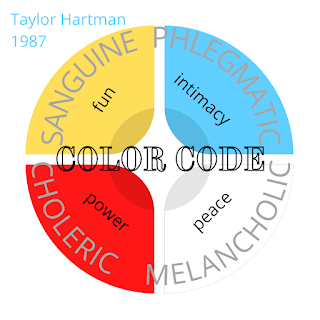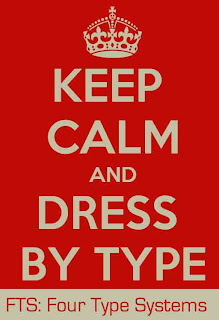Friday, December 1, 2023
The Fox, the master of ideas! These crafty critters are bursting with creativity and always have a trick up their sleeve.
The Cheetah, the embodiment of action! These lightning-fast beings are go-getters who leap into action without hesitation.
And the Bear, the ultimate relationship builders! These charismatic personalities have an innate talent for nurturing connections and fostering a unified team atmosphere."
https://www.gen-i.co.uk/index.php/2018/11/23/four-leadership-personalities/
https://www.linkedin.com/pulse/unleash-your-teams-inner-animal-arya-anil/
"Hares - Creative Types, but bad at follow-through. Filled with multiple ideas. They hop around from idea to idea, excited more by possibilities than by execution. They generate ideas. Their mind is never still.
Owls - They are wise and measured, and while they may also generate ideas, they are best placed beside the Hare to recognise and catch the ideas as they spring forth. Team leaders should be Owls. They identify and support great ideas, but can also see the big picture and component parts needed for execution. Planners and go-getters. Quick thinkers, slow (if not concise, often boring) talkers.
Turtles - Cautious and conservative types, who point out issues and problems ahead of time. These are the people who troubleshoot harebrained ideas and cautiously suggest that most of them are impractical or too expensive or too risky. They are needed to turn ideas into plans because they can prune the tree of options, see the problems ahead of time, and - sometimes but not always - suggest possible solutions. A Hare would describe a Turtle as negative and pessimistic. A Turtle would describe themselves as realistic, and a Hare as lunatic and unstable. They may be slow to change their mind, but when they do it is because they have measured all the options. If a Turtle supports a Hare’s idea, you know you are on a winner.
Squirrels - Details oriented person who get the job done. They love taking action. Give them a list of tasks and they are the happiest animal in the forest. Getting things done is what drives a Squirrel; get them to think big picture and they tend to disappear. We need detail-oriented Squirrels to keep machines running and make sure the bills get paid. Managers and implementers are often squirrels. God bless them. "
Hare, owl, turtle, or squirrel? Recipes for building and running successful teams (strategistsunited.org)Monday, January 24, 2022
Fox – Orange/Adventurous/Artisan
Dolphin – Blue/Harmonious/Idealist
Owl – Green/Curious/Rational
In Please Understand Me (Prometheus Nemesis, 1998) Keirsey further develops his own typology of the four basic “temperaments,” which he calls, after Plato’s categories, Artisans (The Fox), Guardians (The Beaver), Idealists (The Dolphin), and Rationals (The Owl). He discusses forms of intelligence, social roles, self-image, values, and interests of each temperament. His book includes the original MBTI-like test and a new one for his four temperaments. It also has chapters on Mating, Parenting, and Leading according to the different temperaments.
Monday, October 25, 2021
https://marcaccetta.com/personality-test-2/
Choleric (Red) Sanguine (Blue) Phlegmatic (Yellow) and Melancholy (Green)
Saturday, February 21, 2015
Quotes from Tim LaHaye
| Alike in Love: When Opposites Attract (Hear... |
"Sanguines are often dangerous drivers because they are so people-oriented. If you sit in the front, it is okay If you sit in the back, he'll be turning around to talk to you -- and that can be hazardous to your health.
Phlegmatics drive about 15 miles under the speed limit and come to a complete stop before entering the on-ramp of the freeway, creating a long line of traffic behind them. Phlegmatics never get into accidents; they cause them.
Cholerics drive in and out of lanes and take every shortcut in an effort to save a minute going to church or to work.
Melancholics drive exactly right. I mean, they rarely get tickets, they always drive one mile under the speed limit -- never over the speed limit. Everything is perfect."
BROWSING A BOOK TABLE
"Sanguines look at [the] book table and say 'Oh, these are beautiful. I want one of everything.' They buy them all but never read them.
Phlegmatic don't buy many books; they usually fall asleep reading.
The Choleric comes up to the book table and says to her husband, 'You need to read this, and you need that, and you need the other one.'
The Melancholic comes up, looks over the selection very carefully, picks a book up and puts it down. Later, he comes back and looks at it again and puts it down."
BLENDS
"The 'san-clor' would be a super extroverted leader.
The 'san-mel' would be a highly emotional person prone to cry at telephone numbers and birds that fly overhead.
A 'san-phleg' would be aself-indulgent, happy floater who would sink into bankruptcy by the time he was 40 years of age. A nice person but, but not very productive.
A 'phleg-san' makes for a very congenial, people-oriented individual who is often medical or service oriented.
The 'phleg-clor' has great leadership potential and makes a good administrator.
The 'phleg-mel' creates a superb scholar who wouldn't be an irritator.
A 'clor-san' would be an extroverted, highly energetic leader and producer.
A 'clor-mel' would always be crusading for some cause or trying to change something to make it better.
The 'clor-phleg' would make a great administrator. Gentle and diplomatic because of the phlegmatic, he would be forceful enough to supervise people without dominating them.
A 'mel-san' would make a great teacher because the sanguine has the ability to say it, and the melancholy has something to say. If we turned it around, however, we might get a teacher who talks too much about nothing.
The 'mel-clor' person makes a gifted medical doctor. In fact, I am not sure a doctor could get through medical school without some melancholy. This part of his temperament provides him with a high IQ and the ability to look at words and remember them."
Waah, he left out the 'mel-phleg.'
See also
Humor Me :) Temperamental Coaching: Couples
 |  |  |
| Just Your Type: Create the Relationship You... by Paul D. Tieger $25.64 Meyers Briggs | Alike in Love: When Opposites Attract (Hear... by Tim LaHaye | Personality Plus for Couples: Understanding... by Florence Littauer $12.74 four humors in relationships |
 |  |  |
| L. O. V. E.: Putting Your Love Styles to Wo... by Les Parrott $12.74 | L.O.V.E. Workbook for Women: Putting Your L... by Les Parrott $9.99 | L.O.V.E. Workbook for Men: Putting Your Lov... by Les Parrott $9.99 |
 |  |  |
| Are You My Type?: Or Why Aren't You More Li... by Claudine G. Wirths temperament | Are You My Type, Am I Yours? : Relationship... by Elizabeth Wagele $14.55 Enneagram | The Power of Personality Types in Love and ... by Bill Farr $14.50 theartofunity.com/ |
| Date | Founder | Extroversion scales | People-task orientation scale | Introverted, task-oriented | Extroverted, task-oriented | Extroverted, relationship-oriented | Introverted, relationship -oriented | Moderate |
|---|---|---|---|---|---|---|---|---|
| c. 450 BC | Classical elements | Scales not recognized | Areas not recognized | earth | fire | air | water | ether |
| c. 400 BC | Hippocrates's four humours | Scales not recognized | Areas not recognized | black bile | yellow bile | blood | phlegm | Not Recognized |
| c. 190 | Galen's four temperaments | response-delay (quick, slow) | response-sustain (short, long) | melancholic | choleric | sanguine | phlegmatic | Not Recognized |
| c. 1025 | Avicenna's four primary temperaments [12] | morbid states, functional power, subjective sensations, physical signs | Areas not distinguished | rheumatism, insomnia, wakefulness, acquiredhabit, lack of desire for fluids | loss of vigour, deficientenergy, insomnia, wakefulness, high pulserate, lassitude, acquiredhabit | loss of vigour, lassitude, deficient energy, sleepiness, high pulserate, lassitude | rheumatism, lassitude, lack of desire for fluids, sleepiness | Not Recognized |
| c. 1900 | Ivan Pavlov's four temperaments | Passivity: (Active or Passive) | Extremeness: (Extreme response or Moderate response) | melancholic (Weak inhibitory) | choleric (Strong excitatory) | sanguine (Lively) | phlegmatic (Calm imperturbable) | Not Recognized |
| c. 1900 | Alfred Adler's four Styles of Life | "activity" | "social interest" | Avoiding | Ruling or Dominant | Socially Useful | Getting or Leaning | Not Recognized |
| c. 1928 | William Marston and John G. Geier DiSC assessment | Assertive/ Passive | Open/ Controlled | Conscien- tiousness | Dominance | Influence | Steadiness | Not Recognized |
| c. 1947 | Erich Fromm's four Types of Character | assimilation | socialization | Hoarding | Exploitative | Marketing | Receptive | Not Recognized |
| c. 1948 | California Psychological Inventory CPI 260 | action, social confidence/ inner life, privacy | Rule-favoring /questioning, stability/value system, Agreeable/ disagreeable | Visualizer | Leader | Innovator | Supporter | Not Recognized |
| 1958 | MBTI codes | E/I, | Informative/ Directive (mapped by David Keirsey) | ISTJ, INTJ, ISTP, INFJ I..J mostly | ESTJ, ENTJ, ESTP, ENFJ E..J | ESFP, ENFP, ESFJ, ENTP E..P | ISFP, INFP, ISFJ, INTP I..P mostly | Not Recognized |
| c. 1958 | William Schutz, FIRO-B | Expressed | Wanted | See FIRO article for score names. | ||||
| c. 1960s | Stuart Atkins LIFO's four Orientations To Life | Planning vs.Doing | Directing vs. Inspiring | Conserving-Holding | Controlling-Taking | Adapting- Dealing | Supporting-Giving | Not Recognized |
| c. 1960s | David Merrill, "Social Styles" | Assertiveness (Ask-Tell) | Responsiveness (Control-Emote) | Analytical | Driving | Expressive | Amiable | Not Recognized |
| 1964 | Blake- Mouton Managerial Grid Model | Concern for People, Productivity | Areas not distinguished | Impoverished | Produce or Perish | Team Type | Country Club | Middle of the Road |
| c. 1966 | Temperament by LaHaye | Compares other instruments [13] | Areas not distinguished | Melancholy | Choleric | Sanguine | Phlegmatic | "passive sanguine" [14] |
| 1973 | Jay Hall Conflict Management [15] | Concern for personal goals | Concern for relationships | Leave-lose/win | Win/lose | Synergistic; Win/win | Yield-lose/win | Mini-win/mini-lose |
| 1974 | Thomas- Kilmann Conflict Modes[16] | Assertiveness | Cooperativeness | Avoiding | Competing | Collaborating | Accommodating | Compromising |
| c. 1984 | The Arno Profile System (Five Temperaments) | Expressive | Responsive | Melancholy | Choleric | Sanguine | Supine | Phlegmatic |
| c. 1995 | Worley Identification Discovery Profile | Demonstrated, Desired | Social, Leadership, Relationship | Melancholy | Choleric | Sanguine | Phlegmatic | Introverted Sanguine |
| c. 1996 | Tony Alessandra Personality Styles | Indirect/Direct | Open/Guarded | Thinker | Director | Socializer | Relater | Not Recognized |
| c. 1998 | Hartman Personality Profile | Not recognized | Not recognized | Blue | Red | Yellow | White | Not recognized |
| c. 2001 | Linda V. Berens' four Interaction Styles | Initiating-Responding | Informing- Directing | Chart the Course | In Charge | Get Things Going | Behind the Scenes | Not Recognized |
Search
Four Types Line Up
- Erik Thor
- Kindred Grace Personality Types
- Before DYT
- GREEK Humors
- Four Temperaments
- Body Type & Temperament
- MBTI Widely Used but Controversial
- MBTI Keirsey Temperaments
- Dario Nardi Cognitive Types
- HumanMetrics MBTI test
- Free MBTI test
- What's My Style?
- Lion Otter Beaver Retriever with quiz
- Lion Otter Beaver Retriever
- Color Code
- LEAD Personality Inventory
- Masculine Heart Quiz Chemistry.com
- Masculine Heart 4 Types of Men
- Littauer Personality Types
- Tim LaHaye's Humor Test online
- Tim LaHaye's Printable Humors Test
- Elemental Love Styles
- 4 MAT System
- DISC Online
- Tony Robbin's DISC test
- Dr. ROHM on personality & parenting
- CAYGILL Color: The Essence of YOu
- KITCHENER Personal Style Counselors
- SEGERSTROM Look Like Yourself & Love It
- DONNER Color for Body & Soul
- SINCLAIRE IlluminEssence
- RITER Science of Personal Dress
- WRIGHT Colour Psychology
- TUTTLE DYT Dressing Your Truth
- CARROLL Living in Your Element
- Energy Dressing
- Beyond Business as Usual
Other Type Systems
Categories
Popular Posts
-
There is an archangel correlated with each of the four directions and elements. Raphael is the ArchAngel of the East/Air. Gabriel is the Ar...
-
In True Colors, orange is like T1, Blue is like T2, Gold is like T3, Green is like T4. http://truecolorsintl.com/about-us/what-is-true-co...
-
" The Lion, the regal ruler of task organization! These majestic creatures thrive on structure and love creating meticulous plans. ...
-
Earlier Four Type Systems: Fashion Color: The Essence of You by Suzanne Caygill 1980 classic, collector's Edition. Behind...
-
Table of Equivalents for Personality Types and Learning Styles Type 3 Type 1 Type 2 Type 4 Hippocrates Greek Humors (370 ...
-
Four Greek Humors 400 BC William Marston DISC 1928 Don Lowry True Colors 1978 Marc Acetta Taylor Hartman Color Code 1987 Smalley & Trent...
-
Quotes from Tim LaHaye Alike in Love: When Opposites Attract (Hear... DRIVING "Sanguines are often dangerous drivers because t...
-
In Seasonal Color Analysis, we correlate Spring with Air, Summer with Water, Autumn with Fire and Winter with Earth. Often in temperament...
-
Winter T4 | Autumn T3 | Spring T1 | Summer T2 Date Founder Extroversion scales People-task orientation scale Introverted, ...
-
Here is a chart of some of the animals representative of the energy of the four types. Type 1 Type 2 Type 3 Type 4 Gary Smalley Ot...























.jpg)






.jpg)




